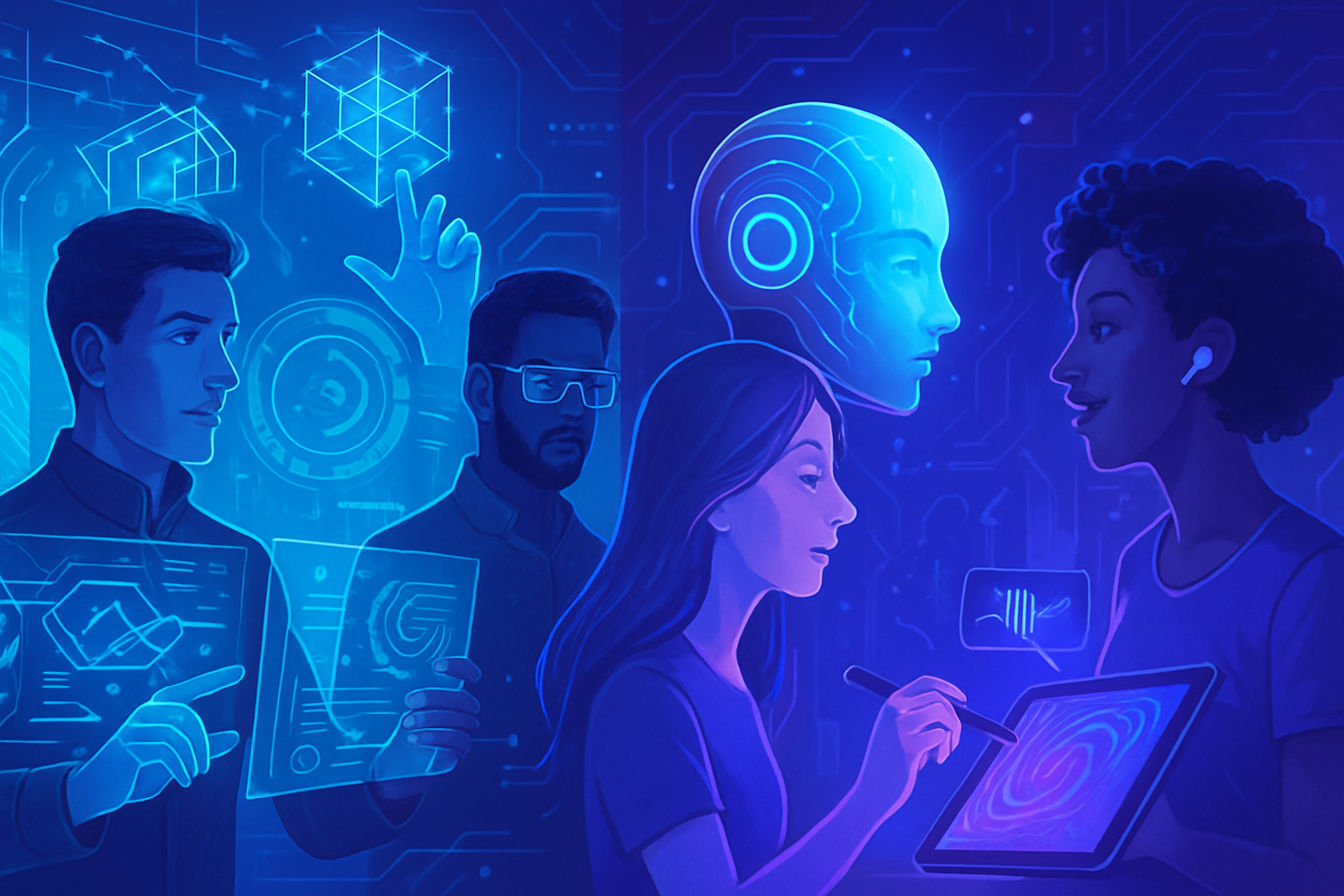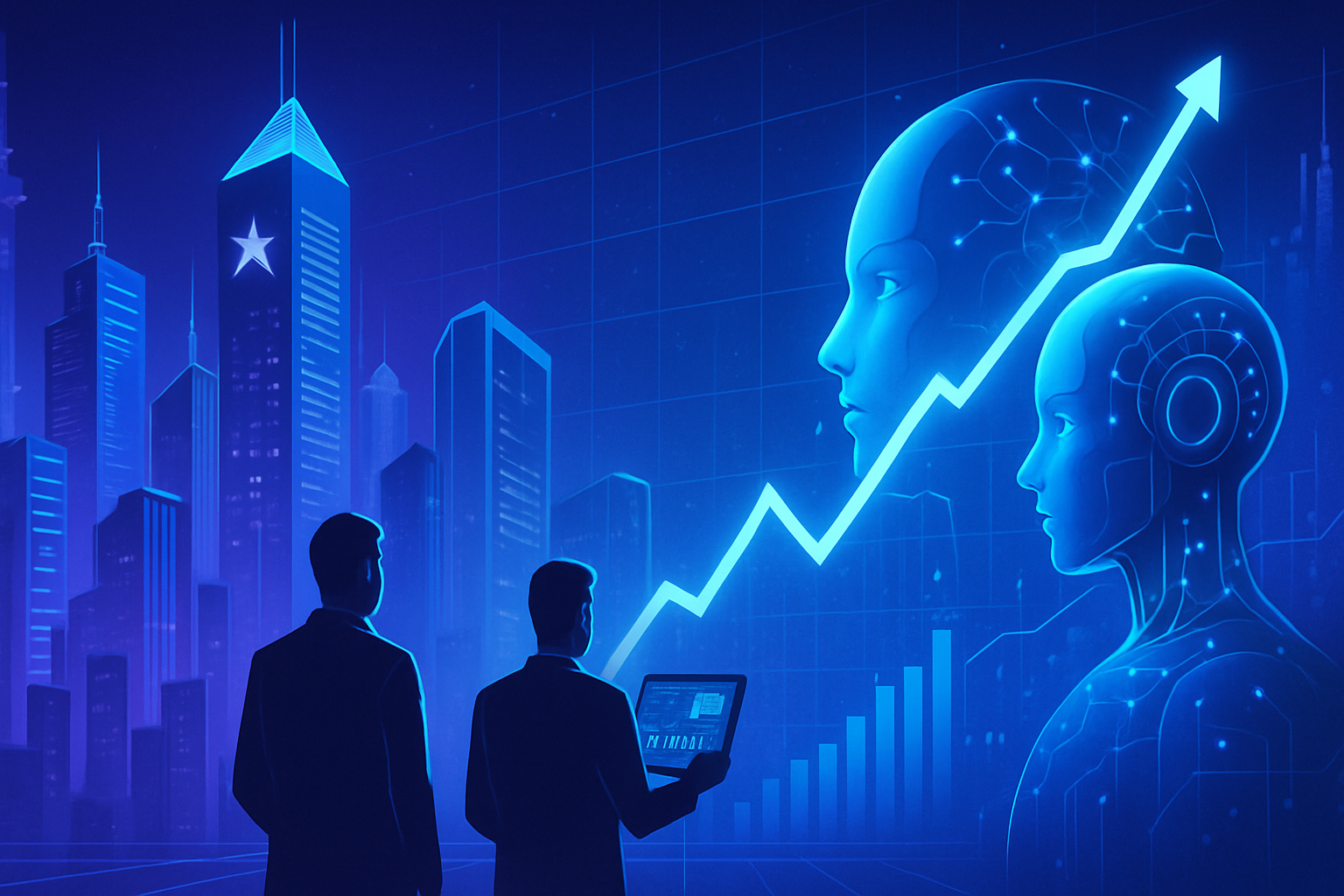Technological innovations are transforming the artistic landscape by introducing AI-powered painting robots. Works generated by these precision machines offer a new perspective on artistic creation. The emergence of these devices calls into question traditional mechanisms of artist compensation, while also raising questions about the authenticity and value of creations.
Increasing artists’ income has become the primary goal of this avant-garde approach. Hesitant beginnings evolve into impressive results, demonstrating the immense potential of human-machine collaboration. The dynamic between the artist and the automaton suggests a future where copyright and fair compensation will be rethought for artists of all backgrounds.
AI-powered painting robots: innovation in Montreal
A bold initiative in Montreal is reinventing the art world with the assistance of AI-powered painting robots. Artist Audrey-Eve Goulet experienced innovative technology when a robotic arm reproduced one of her works. Initially reluctant, Goulet expressed her surprise and admiration at the precision of the device.
The interaction between artists and technology
Acrylic Robotics, a company founded by Chloe Ryan, strives to help artists increase their income through high-quality replicas of their works. Drawing from her personal experiences, Ryan realized that her income from painting sales was meager, prompting her to reflect on how robots could improve the situation.
A meticulous creation process
The process of reproducing artworks with robots requires meticulous attention. Specialists at Acrylic Robotics recreate the original work by tracing instructions based on brush strokes and digital pigments. This method aims to capture the soul of a painting in a way that a simple photograph cannot rival.
The business model behind Acrylic Robotics
The pricing of reproductions varies, ranging from a few hundred to a thousand dollars, depending on the artist’s notoriety and the value of the work. The company shares revenue with artists, offering them a percentage ranging from five to fifty percent. An innovative approach that generates growing interest among emerging artists.
Reservations and custom requests
A waiting list of about five hundred artists demonstrates the enthusiasm for this model. Ryan invites interested artists to submit their reference works and highlights a system of monthly compensation. This transparency fosters a climate of trust and better reception.
Reactions from the artistic community
Concerns about the use of robots in the artistic field are widely discussed. Some artists fear dilution of their authentic work, while others are more open to this technology. Ryan emphasizes the ‘Three Cs’ of respecting the creative process: consent, credit, and compensation.
Consequences for the perception of art
Questions also arise regarding the value of art pieces as robotic reproduction becomes more widespread. Michael Kearns, a researcher, wonders about the risk of abundance affecting the perception of the value of artworks. A dialogue is necessary between technological innovation and respect for art.
Frequently asked questions about AI-powered painting robots
How do AI-powered painting robots reproduce artworks?
The robots use digital instructions based on an artist’s brush strokes and pigments to create high-quality replicas of their works, respecting the details of the creative process.
What are the financial benefits for artists using this technology?
This technology allows artists to generate additional income from the sale of reproductions without necessarily increasing their workload while ensuring fair profit sharing.
Do artists have to give their consent for their works to be reproduced by a robot?
Yes, the approach of this technology relies on respecting intellectual property, which requires the explicit agreement of the artist before any reproduction.
Is there a risk that the value of original art will decrease with this technology?
Some experts are concerned about a potential devaluation of original works if reproductions become too abundant, but others believe it may also democratize access to art.
What types of works can be reproduced by AI-powered painting robots?
The robots can reproduce a variety of works, including oil paintings, watercolors, and mixed media, as long as the artists provide the necessary instructions.
How does the profit-sharing work between the artist and the painting robot company?
Profit-sharing varies based on the artist’s notoriety, reaching up to 50% for established artists, while emerging artists may receive about 5% of sales.
Is the painting robot technology accessible to all artists?
Yes, the technology is designed to be accessible to all artists, regardless of their notoriety, with a waiting list currently for interested parties.
What is the artistic dimension of the reproductions created by the robots?
Although the reproductions are precise, some artists feel that these works lack the history and personal emotion attached to the original work.
How does the company ensure the quality of the reproductions?
The company employs specialists who develop digital models of the works, ensuring that each reproduction adheres to the artist’s technique and style.
Can clients make custom requests for reproductions?
Yes, it is expected that clients will be able to make custom requests, such as portraits of pets in an artist’s preferred style, in the near future.




